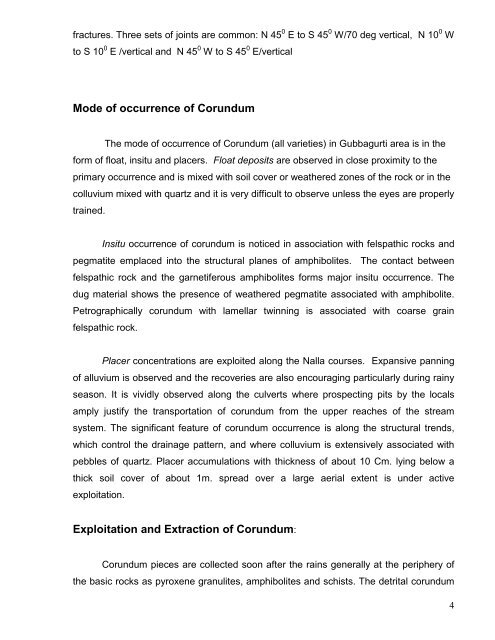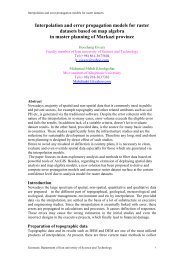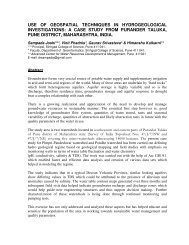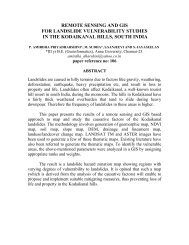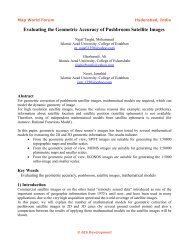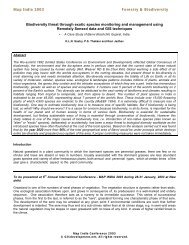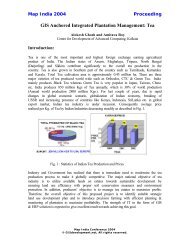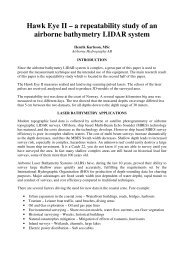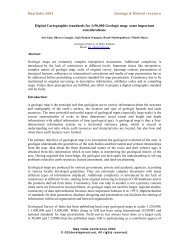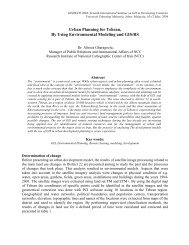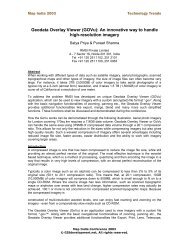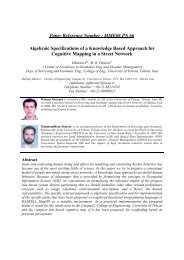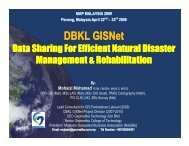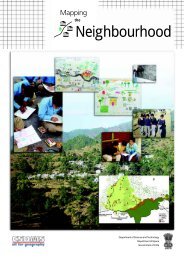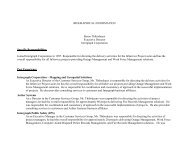Map India 2005 Geomatics 2005
Map India 2005 Geomatics 2005
Map India 2005 Geomatics 2005
Create successful ePaper yourself
Turn your PDF publications into a flip-book with our unique Google optimized e-Paper software.
fractures. Three sets of joints are common: N 45 0 E to S 45 0 W/70 deg vertical, N 10 0 W<br />
to S 10 0 E /vertical and N 45 0 W to S 45 0 E/vertical<br />
Mode of occurrence of Corundum<br />
The mode of occurrence of Corundum (all varieties) in Gubbagurti area is in the<br />
form of float, insitu and placers. Float deposits are observed in close proximity to the<br />
primary occurrence and is mixed with soil cover or weathered zones of the rock or in the<br />
colluvium mixed with quartz and it is very difficult to observe unless the eyes are properly<br />
trained.<br />
Insitu occurrence of corundum is noticed in association with felspathic rocks and<br />
pegmatite emplaced into the structural planes of amphibolites. The contact between<br />
felspathic rock and the garnetiferous amphibolites forms major insitu occurrence. The<br />
dug material shows the presence of weathered pegmatite associated with amphibolite.<br />
Petrographically corundum with lamellar twinning is associated with coarse grain<br />
felspathic rock.<br />
Placer concentrations are exploited along the Nalla courses. Expansive panning<br />
of alluvium is observed and the recoveries are also encouraging particularly during rainy<br />
season. It is vividly observed along the culverts where prospecting pits by the locals<br />
amply justify the transportation of corundum from the upper reaches of the stream<br />
system. The significant feature of corundum occurrence is along the structural trends,<br />
which control the drainage pattern, and where colluvium is extensively associated with<br />
pebbles of quartz. Placer accumulations with thickness of about 10 Cm. lying below a<br />
thick soil cover of about 1m. spread over a large aerial extent is under active<br />
exploitation.<br />
Exploitation and Extraction of Corundum:<br />
Corundum pieces are collected soon after the rains generally at the periphery of<br />
the basic rocks as pyroxene granulites, amphibolites and schists. The detrital corundum<br />
4


